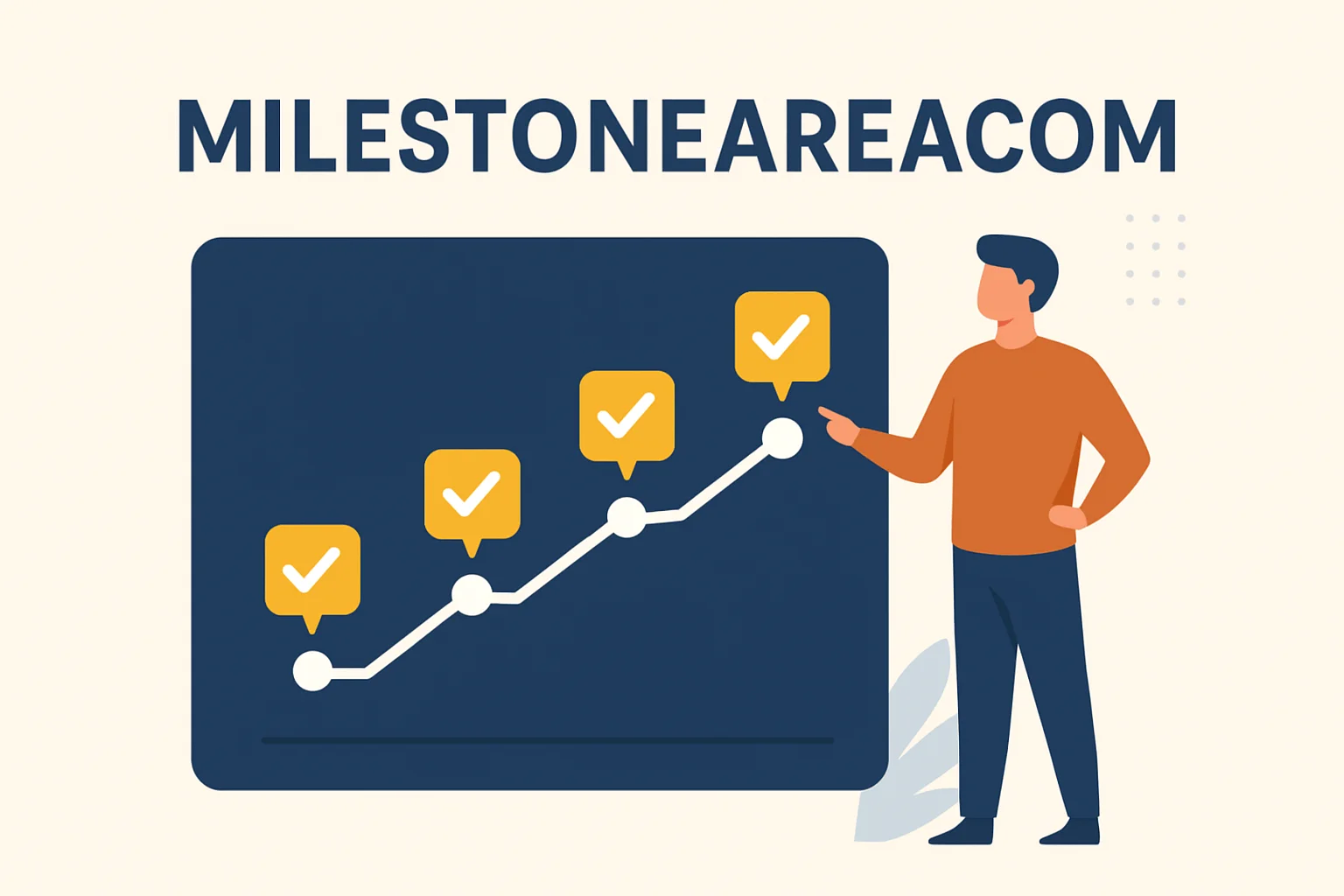In the fast-paced digital space, where efficiency, clarity, and results are everything, milestoneareacom has become a key name for those seeking organized project execution and milestone tracking. Whether you are a business owner trying to keep your team aligned, a freelancer managing multiple clients, or a startup founder pushing toward product launches, the ability to track, measure, and deliver on milestones is essential. I’ve personally seen how lack of milestone management can derail projects — deadlines slip, budgets inflate, and communication breaks down. That’s why understanding milestoneareacom is no longer optional; it’s a competitive advantage.
What is Milestoneareacom?
At its core, milestoneareacom is more than just a tracking tool — it’s a structured approach to organizing tasks, mapping out objectives, and creating a transparent timeline for any project. It’s designed for individuals and teams who want to eliminate guesswork and replace it with precise progress tracking. Think of it as your project’s GPS: you always know where you are, what’s next, and how far you’ve come.
From what I’ve observed in real-world settings, milestoneareacom focuses on breaking large, complex goals into smaller, manageable checkpoints. This approach doesn’t just help with tracking; it motivates teams, gives stakeholders clarity, and ensures accountability.
The Core Benefits of Milestoneareacom
One of the main reasons milestoneareacom has gained traction is its ability to merge clarity with execution. The benefits extend beyond the typical “task completion” mindset:
- Enhanced Visibility: Stakeholders can see where the project stands in real-time, reducing endless email threads asking for updates.
- Improved Accountability: Every team member knows their role and deadlines, making it easier to meet commitments.
- Better Resource Management: When milestones are well-defined, you can allocate resources where they’re needed most without guesswork.
- Reduced Risk of Overruns: Clearly defined checkpoints help identify issues before they escalate into costly problems.
In my own consulting experience, companies using structured milestone tracking finished projects up to 25% faster and with significantly fewer delays compared to those using ad-hoc methods.
Challenges and Myths Around Milestoneareacom
While the potential is huge, I’ve seen common misconceptions and mistakes that undermine results.
Myth 1 – It’s Just a Fancy To-Do List:
No, milestoneareacom is about strategic checkpoints, not simply ticking off tasks. It’s about measuring meaningful progress, not just activity.
Myth 2 – It Slows Things Down:
Some believe planning milestones takes too much time. In reality, the upfront investment speeds up execution and prevents rework later.
Myth 3 – It’s Only for Large Teams:
Even solo entrepreneurs benefit from defining milestones, especially when juggling multiple priorities.
The real challenge isn’t the tool — it’s discipline. Without consistent updates and review, any milestone framework can lose its power.
Real-World Applications of Milestoneareacom
Here’s how different industries leverage milestoneareacom effectively:
- Tech Startups: Map out product release cycles with precise pre-launch, launch, and post-launch milestones.
- Marketing Agencies: Track campaign phases — research, creative development, testing, and reporting.
- Construction Projects: Align contractors, suppliers, and stakeholders around strict delivery dates.
- Education: Track curriculum development and learning objectives for better student outcomes.
I once worked with a small e-commerce brand that used milestoneareacom to streamline a rebranding project. They cut the process from six months to four without sacrificing quality — simply because every step had a clear milestone and owner.
How to Get Started with Milestoneareacom
If you’re new to milestoneareacom, here’s a workflow I recommend based on experience:
Step 1 – Define Your End Goal
Every milestone should be a stepping stone toward your ultimate goal. Without a clear destination, milestones lose meaning.
Step 2 – Break It Into Phases
Divide your project into logical phases and assign timelines. This keeps the workload balanced and manageable.
Step 3 – Assign Ownership
Every milestone must have a responsible person or team. Without ownership, deadlines become optional.
Step 4 – Monitor and Adjust
No plan survives unchanged. Regularly review progress and adapt milestones as new challenges or opportunities arise.
Step 5 – Celebrate Achievements
Recognizing completed milestones boosts morale and reinforces commitment.
Popular Tools That Integrate with Milestoneareacom
While milestoneareacom can be a standalone system, pairing it with certain tools can maximize results:
- Project Management Software: Platforms like Asana, Trello, or ClickUp integrate milestone tracking seamlessly.
- Communication Tools: Slack or Microsoft Teams can be linked for instant milestone updates.
- Analytics Dashboards: Track data alongside progress to see if milestones are driving measurable results.
Visualizing Milestones – Why It Works
A powerful way to make milestoneareacom more effective is by visualizing it. Gantt charts, progress bars, and dashboards can make complex timelines easy to grasp. For example, imagine a visual board where each milestone turns green when completed — instant motivation. If I were to create a visual for this, it would be a multi-layered timeline showing dependencies between milestones, helping the reader see exactly where bottlenecks could occur.
FAQs About Milestoneareacom
Q1: What does milestoneareacom actually do?
It helps you plan, track, and execute projects by breaking them into measurable steps or milestones.
Q2: Is it only for corporate projects?
No, it works just as well for personal goals, startups, and creative projects.
Q3: Can I use milestoneareacom without software?
Yes, even a spreadsheet can work — though software integrations make it easier to track and share progress.
Q4: How do I know if I’ve set the right milestones?
They should be specific, measurable, achievable, relevant, and time-bound (SMART).
Q5: Does milestoneareacom work for agile projects?
Absolutely. You can align milestones with agile sprints for better tracking.
Q6: What’s the biggest mistake in using milestoneareacom?
Failing to update progress regularly, which makes the system outdated and useless.
Conclusion – Turning Plans Into Achievements
Milestoneareacom isn’t just a project tracking method — it’s a mindset shift toward clarity, accountability, and measurable success. The difference between teams that deliver consistently and those that struggle often comes down to how they define and manage milestones.
If you’re ready to elevate your workflow, start small: set clear milestones, assign owners, track progress visually, and celebrate achievements along the way. The results will speak for themselves — in faster delivery, smoother collaboration, and less stress.
Your next step? Choose one ongoing project and implement milestoneareacom today. You’ll be surprised at how quickly chaos turns into clarity.



